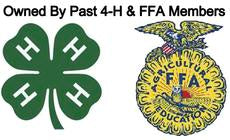Where to start?
A small farm will have existing fences in various states of repair (from new to many years old) with some of them no longer being stock proof. A great place to start when looking at fencing is to establish a budget and to work out the maximum amount you are able to spend.
Next you will need to decide what type of fence you are going to build. This will depend on the type of livestock running on your small farm, key land-use classes and overall requirements for the fence. When designing a fencing program take into account areas of the farm which may need special consideration, such as the exclusion of stock from a waterway.
A successful fencing program will depend on achieving a satisfactory result for the required need. Reasons for building a fence may vary from keeping livestock and people safe if close to a road, aesthetics or family matters such as providing a safe area for children to play. All issues should be considered before building commences. In future articles we will discuss in finer detail particlular fence types and which is best for your farm.
Repair old or build new?
Deciding whether to repair or replace an old fence and whether to reposition a new fence will depend on the following aspects of your property and its current fence layout:
- Land Contour. Do fences on your farm follow the land contour or have they been erected to create a particular shape? Does your property have a floodway? Having fences follow land contours and obstacles is recommended to increase your usable land area. Fences which follow creek beds, hill and tree lines are ideal as they exclude these features from inside the paddock which can make management tasks such as spraying and mustering difficult. Fencing off potential flood areas to prevent stock and vehicle access is also good common sense.
- Access to stock water. Consider if the current fence layout allows livestock easy access to water, or whether water can easily be provided to those paddocks without it.
- Trees. Trees provide much needed shade and shelter for your stock and farm, so it's important to consider the prevailing wind and if your stock can gain shelter on the opposite side of it. Also consider the path of the sun particularly in summer, and if the established trees will provide adequate shade. Whilst these aspects are important, having a large stand of unfenced trees in the middle of a paddock can pose problems when it’s time to muster. So you will need to come up with a happy medium solution, weighing up the requirement for livestock shade along with ease of management.
- Gate access. Positioning of gates is critical for ease of stock movement. Gates should always be placed in a corner or a recess. Stock will almost always run along a fence line to a corner or around a corner when being mustered. Gates placed in the middle of a fence line require and experienced stock handlers to successfully negotiate stock through. Future machinery requirements should also be taken into account when considering gate access; it’s better to be prepared and plan ahead rather than have to remove part of the fence later to allow machinery access.
- Environmental issues. It’s an environmentally friendly practice to keep stock out of creeks, streams, rivers, and dams. These areas are prone to soil and water erosion and giving stock unrestricted access can cause water pollution from disturbed soil and livestock urine/faeces.
- Access and laneways. Take into account stock movement around the farm including access to woolsheds, stock yards and loading ramps. Having adequate lane access with a sound fence layout ensures simpler stock movement and overall management of the whole farm.





